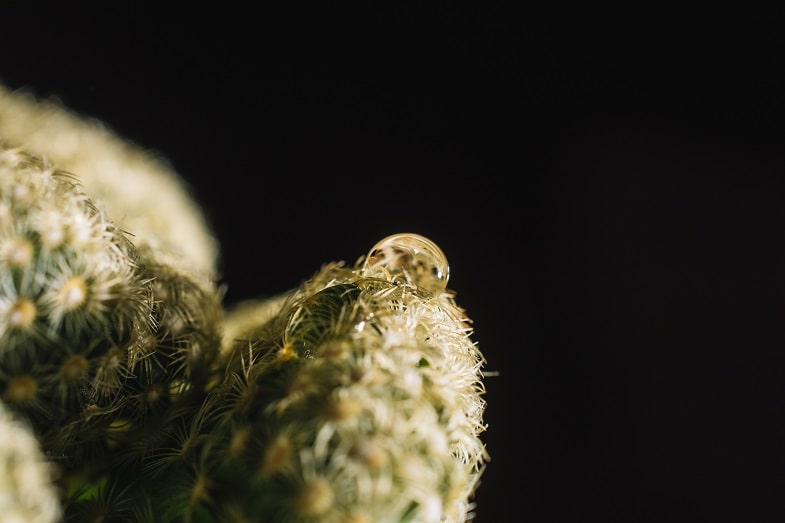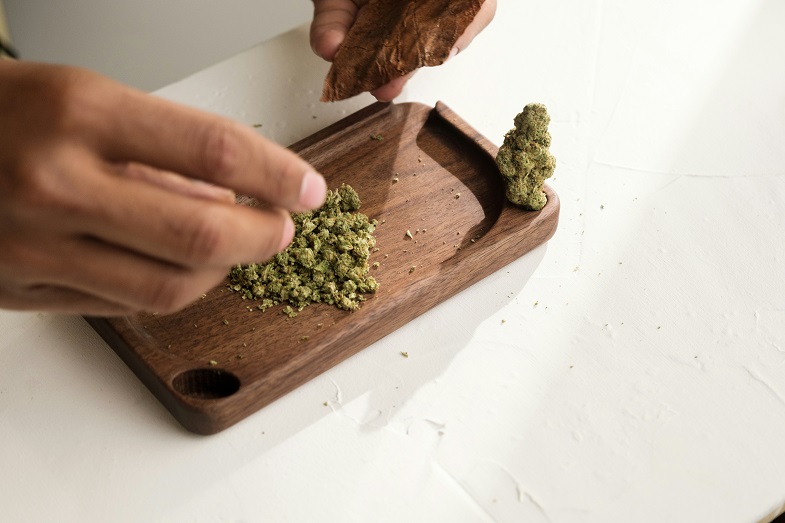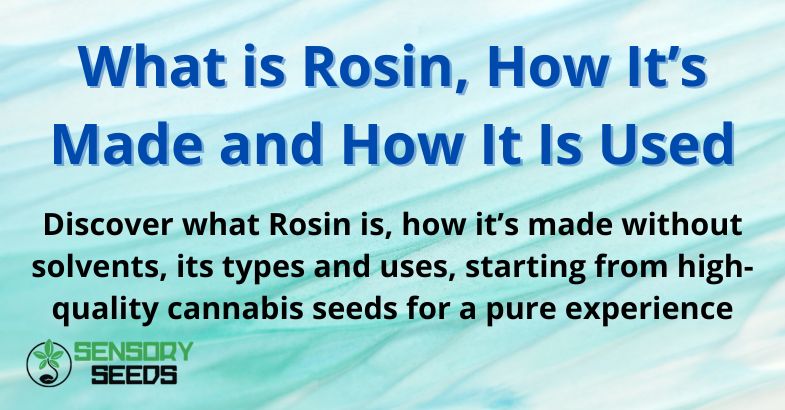Published on: 11/07/2025
Discover what Rosin is, how it’s made without solvents, its types and uses, starting from high-quality cannabis seeds for a pure experience
In the cannabis sector, innovation and the constant search for increasingly natural and refined methods to extract active compounds have led to the development of advanced techniques. Among these, Rosin stands out for its purity and the ease with which it can be produced without the use of chemical solvents. Enthusiasts, especially those who grow using high-quality cannabis seeds, see Rosin as a valid way to optimize both yield and the sensory experience offered by the plant.
Whether it involves marijuana seeds, hemp or autoflowering seeds, choosing superior genetics remains a crucial element in Rosin production as well. In this article, we will explore what Rosin is, how it is made, its different types, and the many possible uses.
What is Rosin
Rosin is a cannabis concentrate obtained through a mechanical process that uses heat and pressure to extract the resin found in flowers or hashish. Unlike other extraction techniques that involve chemical solvents like ethanol or butane, Rosin is known for being a natural, pure product free from potentially harmful residues. This method has gained increasing popularity among health-conscious consumers who want to use concentrated cannabis without additional risks.
The texture of Rosin can vary depending on the source material and the extraction conditions, ranging from a sticky, soft substance similar to honey to a harder, more crystalline form. The color also varies, from light golden shades to darker brown tones, influenced by both the quality of the starting material and the parameters used during the extraction process.
Read also: How to Make Cannabis Butter
The Different Types of Rosin
The world of Rosin is far from uniform or easy to define in general terms. On the contrary, it consists of multiple variations, each with its own distinctive characteristics, stemming both from the different extraction techniques used and the specific cannabis strains selected as raw material. This diversity makes Rosin an extremely versatile concentrate, capable of meeting a wide range of needs depending on the production method and the plant’s genetics.
In this section, we will focus on five main types of Rosin, carefully outlining the unique features that set them apart, the advantages each one offers, and the contexts in which they are most suitable. We will take a closer look at how these different forms of Rosin fit into the broader world of cannabis concentrates, highlighting their organoleptic properties, potency, and recommended usage methods, to provide a complete and detailed overview for anyone looking to better understand this increasingly popular product.


Flower Rosin
Flower Rosin is made directly from dried, well-cured cannabis flowers. This type of Rosin is highly appreciated for its aromatic richness and its ability to faithfully preserve the terpene profile of the original plant. To obtain high-quality Flower Rosin, it is essential to start with premium flowers, ideally grown from feminized or autoflowering weed seeds, cultivated with great attention to plant care and health. The amount of Rosin produced can vary, mainly influenced by the density of resin glands present and the freshness of the floral material.
Hash Rosin
Hash Rosin is obtained by pressing hashish directly, a concentrate derived from isolating the cannabis plant’s trichomes. Since it starts from an extract, this method allows producing a particularly potent final product. The hashish used can be produced by dry sift or by using ice water (ice water hash). The quality of the resulting Rosin largely depends on the purity of the starting hashish: a well-refined concentrate, free of plant residues, will produce clear, fragrant Rosin with a high concentration of cannabinoids.
Dry Sift Rosin
Dry Sift Rosin is produced by applying pressure to trichomes separated dry using fine mesh sieves. Although it shares many features with Hash Rosin, it differs because it is made exclusively from highly pure kief. To ensure excellent results, it is crucial to start from extremely clean raw material, which is why this type of Rosin is often chosen by small artisanal producers who carefully oversee every stage of the process. Its characteristics include a smooth and creamy texture, a light color, and a particularly rich and intense aroma.
Live Rosin
Live Rosin is considered one of the most refined and expensive Rosin concentrates. Its uniqueness lies in using fresh plants that are immediately frozen after harvest, thus avoiding both drying and curing. This method preserves all the original terpenes, offering an aromatic and flavor profile that is extremely rich and true to the plant’s natural characteristics. To produce Live Rosin, ice water hash is first made from the fresh material, which is then pressed to extract the resin. The quality of the final product is closely linked to the starting genetics, which is why it is essential to choose high-quality cannabis seeds, preferably selected from premium varieties.
Trim and Leaf Rosin
Rosin can also be made from less prized parts of the plant, such as trim and resin-rich leaves. Although the yield is lower and the quality generally inferior compared to that derived from flowers or hashish, this approach maximizes the use of every cannabis component, reducing waste. Rosin extracted from trim tends to have a darker color and a less intense aromatic profile, but it can still be useful for making edibles or cannabis-based cosmetics and ointments. To achieve better results, it is preferable to select leaves from plants grown with high-quality marijuana seeds and carefully managed during the final flowering phase.
How to prepare Rosin step by step
Producing Rosin is a relatively simple process but requires precision and attention to detail. Essential tools include a manual or hydraulic Rosin press, non-stick parchment paper, nylon filter bags of various micron sizes, and of course high-quality starting material.
The first step is carefully selecting and preparing the material to be processed. If using cannabis flowers, they should be well-cured and have an ideal moisture level around 60 percent. If using hashish or kief, it is important to ensure their purity before proceeding.
Once ready, the material is placed inside filter bags that retain unwanted plant particles, thus improving the quality of the resulting Rosin. The bags are then wrapped in non-stick parchment paper and placed inside the press where heat and pressure extract the resin.
Temperature and pressure settings are crucial: for hashish, temperatures typically range between 90 and 105 degrees Celsius, while for flowers the preferred range is between 100 and 120 degrees Celsius, applying pressures from one to three tons. Pressing time varies from 45 to 120 seconds.
The extracted Rosin is then collected using a metal tool and left to cool completely before storing or consuming.


How to use Rosin
Once obtained, Rosin can be used in many ways depending on the desired experience and individual preferences. One of the most common techniques is dabbing, which involves vaporizing the Rosin on a very hot surface and inhaling the vapor through a rig. This method is particularly suited for experienced users due to its high intensity and immediate effect.
Another common way to consume Rosin is by combining it with cannabis or tobacco inside joints or cigarettes to enhance both effectiveness and duration. Some consumers prefer using it with vaporizers compatible with extracts, while others incorporate it into edible recipes by melting it into butter or vegetable oil.
Thanks to its purity and high content of active compounds, Rosin is also used in making topical and cosmetic cannabis products. In these applications, it is dissolved in a carrier oil and applied directly to the skin to help with inflammation, muscle pain, or skin conditions.
Read also: Cannabis Seeds: Nutritional Value
Conclusion
Rosin is one of the most fascinating innovations in the cannabis world, combining purity, effectiveness, and ease of access. Its production requires neither sophisticated tools nor chemical solvents, making it ideal for both experienced users and beginners interested in exploring concentrates. Furthermore, its flexibility in using different raw materials such as hashish, trims, or flowers allows its production to be adapted to individual availability and needs.
Starting from selected cannabis seeds, whether autoflowering, feminized, marijuana, or hemp seeds, it is possible to create a high-quality Rosin that guarantees a unique therapeutic and sensory experience. In a landscape where safety and transparency are increasingly essential, Rosin stands out as one of the best options for those who want to get the most out of the cannabis plant.









